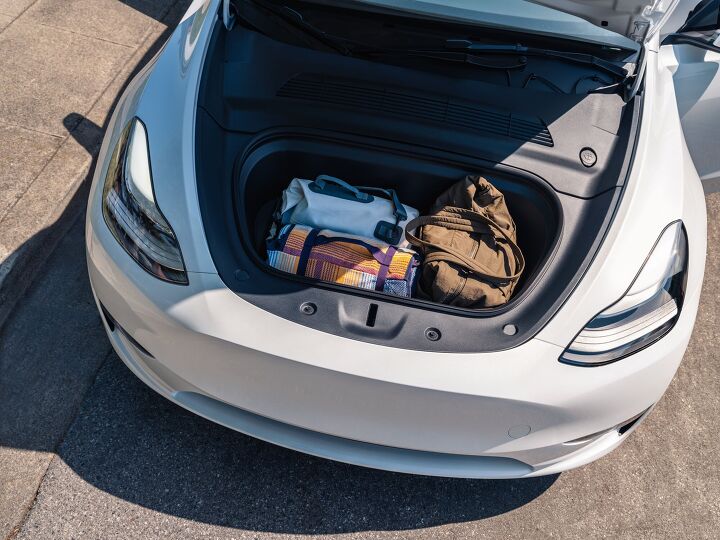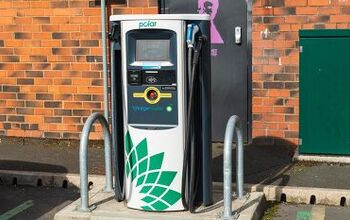Consumer Reports Lists Least/Most Expensive Car Brands to Maintain

With the average vehicle now older than ever before and fewer people capable of spending the kind of money required to purchase a brand-new automobile, maintenance has become even more relevant. To that end, Consumer Reports has furnished an analysis on just how much each nameplate is likely to set you back in terms of upkeep over its lifespan.
That said, it would be irresponsible of us not to mention that the differences between individual models can be quite vast. A dud from a company offering below-average maintenance costs may very well outpace the typical vehicle from a brand that’s known for pricey upkeep. Still, the list is more-or-less what one would expect. Mainstream brands tended to be on the cheaper end, while luxury brands from European countries trended much higher.
The data comes by way of CR’s 2023 Annual Auto Survey, where members were asked as part of a much broader survey how much they had spent in total maintenance over the previous 12 months. This included oil changes and necessary repairs, but would exclude everything covered under recalls or warranty. This total only applies to the dollar amount paid out of pocket by the owner. Consumer Reports likewise noted that repair and upkeep needs changes dramatically over time.
From Consumer Reports:
The comparison for fresher cars is muddied because a number of brands, including BMW and Toyota, offer free maintenance periods on new cars. And usually, cars need very little work in the first couple of years beyond an oil change and tire rotation. Nearly all new-car warranties last at least three years, and repairs, if needed, are covered. The analysis shows that costs can skyrocket when the warranty and free maintenance periods are over.
Knowing the typical ownership costs for each brand can help you save money in the long run by avoiding surprises, either by choosing a less expensive brand to maintain or by budgeting accordingly.
“The difference to maintain a car on average between some brands can be thousands over a 10-year time frame,” says Steven Elek, Consumer Reports’ program leader for auto data analytics. “Also, expensive luxury vehicles are often quite expensive to maintain as well over time.”
Interestingly, the manufacturer that saw the lowest maintenance costs (at $4,035) over a 10-year period was Tesla. The brand likewise saw the leanest average repair bills in the 1-to-5 year period and 6-to-10 year period. Granted, a battery replacement would likely eclipse what you’d see in terms of normal repairs. But Tesla’s power packs seem like they’re intent on hanging in there for at least a decade.
Buick and Toyota were tied for second place at $4,900 over 10 years. However, Toyota products were slightly cheaper to own during the 5-to-10-year period, whereas Buick were cheaper to own in the 1-to-5-year span. Lincoln was close behind them at $5,040 over 10 years and followed (listed lowest price to highest) by Ford, Chevrolet, Hyundai, Nissan, Mazda, Honda, and Kia.
The next group encompassed the $6,000-8,000 bracket over 10 years. Brands here included Dodge, Jeep, Chrysler, Volkswagen, Cadillac, Ram, Lexus, GMC, Subaru, Mini, and Acura.
Things start to balloon from there, with the priciest brands (in terms of maintenance) trending toward higher-end nameplates. Infiniti was the lowest, averaging $8,500 over 10 years. Meanwhile, Volvo ended up at $9,285. BMW and Audi both managed to squeak in under the $10,000 mark. They also weren’t that far from other brands in terms of maintenance costs in the 1-to-5-year period. However, the same cannot be said for the final group.
Here, we had Mercedes-Benz averaging $10,525 over 10 years and a comparably large $2,850 within the first 5 years. But that was nothing when we took time to examine Porsche and Land Rover. Porsche owners can expect to spend (on average) $4,000 in maintenance within the first 5 years and a grand total of $14,090 over 10 years. Land Rover was even steeper, ending up at $19,250 over the first 10 years of ownership.
Some of those costs can be mitigated if you’re someone who is capable of maintaining your own vehicle. But certain brands are undoubtedly going to be trickier to work on than others and the parts you’ll need could carry a higher price tag as well.
“If you are considering a luxury model, it may be wise to purchase one from a domestic brand that may have lower maintenance and repair costs,” said Elek. “For example, over 10 years, Mercedes-Benz models are more than double the cost to maintain and repair as those from Lincoln.”
Those seeking a more comprehensive breakdown on CR's maintenance pricing survey are encouraged to check out the results here.
[Image: Tesla]

A staunch consumer advocate tracking industry trends and regulation. Before joining TTAC, Matt spent a decade working for marketing and research firms based in NYC. Clients included several of the world’s largest automakers, global tire brands, and aftermarket part suppliers. Dissatisfied with the corporate world and resentful of having to wear suits everyday, he pivoted to writing about cars. Since then, that man has become an ardent supporter of the right-to-repair movement, been interviewed on the auto industry by national radio broadcasts, driven more rental cars than anyone ever should, participated in amateur rallying events, and received the requisite minimum training as sanctioned by the SCCA. Handy with a wrench, Matt grew up surrounded by Detroit auto workers and managed to get a pizza delivery job before he was legally eligible. He later found himself driving box trucks through Manhattan, guaranteeing future sympathy for actual truckers. He continues to conduct research pertaining to the automotive sector as an independent contractor and has since moved back to his native Michigan, closer to where the cars are born. A contrarian, Matt claims to prefer understeer — stating that front and all-wheel drive vehicles cater best to his driving style.
More by Matt Posky
Latest Car Reviews
Read moreLatest Product Reviews
Read moreRecent Comments
- Redapple2 All this BEV investment. A bigger impact (less oil consumption) would have been made if we had made PIG UP trucks smaller since 2000 and not HUGEr. (And raised gas tax by $2-3/gallon.)
- ChristianWimmer One of my clients is a company that is actually producing eFuels in Leipzig. Yes, they require a lot of energy to produce but this would not be an issue if Germany had nuclear energy or used the excess energy from wind and solar to produce these fuels. In such a scenario the energy losses wouldn’t really matter.Also, I am told that nations like Spain or the North African nations like Morocco or Tunisia could be ideal places to produce eFuels/Hydrogen due to their abundance of solar power. Again, the energy loses here would not matter since the energy used to produce these fuels is essentially “free”. If this path were pursued, Morocco and Tunisia could become wealthy nations and exporters of eFuels and Hydrogen. Countries with an abundance of solar or wind or hydro energy could be producing eFuels for their domestic consumption and export.Another argument which to me is irrelevant these days ist the poor thermal efficiency of ICE engines (25-35% gasoline, 40-45% diesel). One long trips with cruise control set to 130 km/h and even the occasional venture into the 180-200 km/h zone, my fully loaded (with my gear) A250 (2.0 4-cylinder 224-hp Turbo) can achieve an impressive gas mileage of 6 L / 100 km. That’s phenomenal - I am looking at six 1 liter bottles of water right now and that’s all my car needs to travel 100 km… amazing.So, I am a supporter of eFuels. I love internal combustion engines and if we want to use them in a climate neural way, then eFuels are a must. Also, to me every ICE car is way more sustainable and longer-lasting an an EV. Mazda, Toyota etc. are making the right move IMO.
- Blueice Once you infuse governmental unit regulation & [marketing] and taxpayerfunding, one knows quite well, dat the product or service isdestine to fail; which includes battery vehicles. Just axe yourself how revolutionary have your home batterydevices become ??? I am still waiting. after three decades, for a battery shaver whichonly requires charging two or three times per year.I am glad that I do not have a plug in Frau.
- Tassos Such a heavy breadvan on stilts, with so much HP, AND with ONLY 100 KWH Battery, I doubt if you will ever see 250 miles, let alone 300, under the best of conditions. In the winter, count on 150 miles range.And NO, it looks TERRIBLE. The only SUV that looks great is the RANGE ROVER.
- Tassos They sure are doing the right thing in the SHORT and MEDIUM term.As for the long term, in the long run, YOU'LL ALL BE DEAD, so WHO CARES.


































Comments
Join the conversation
I have a 2009 C6 Corvette LS3 and the only major repair that I have done on it was replace the radiator. Besides usual plugs, wires oil etc. And yes those tires are expensive as well.
It's just plain sad that Posky doesn't know that EV batteries are warrantied for 8 years / 100K miles.